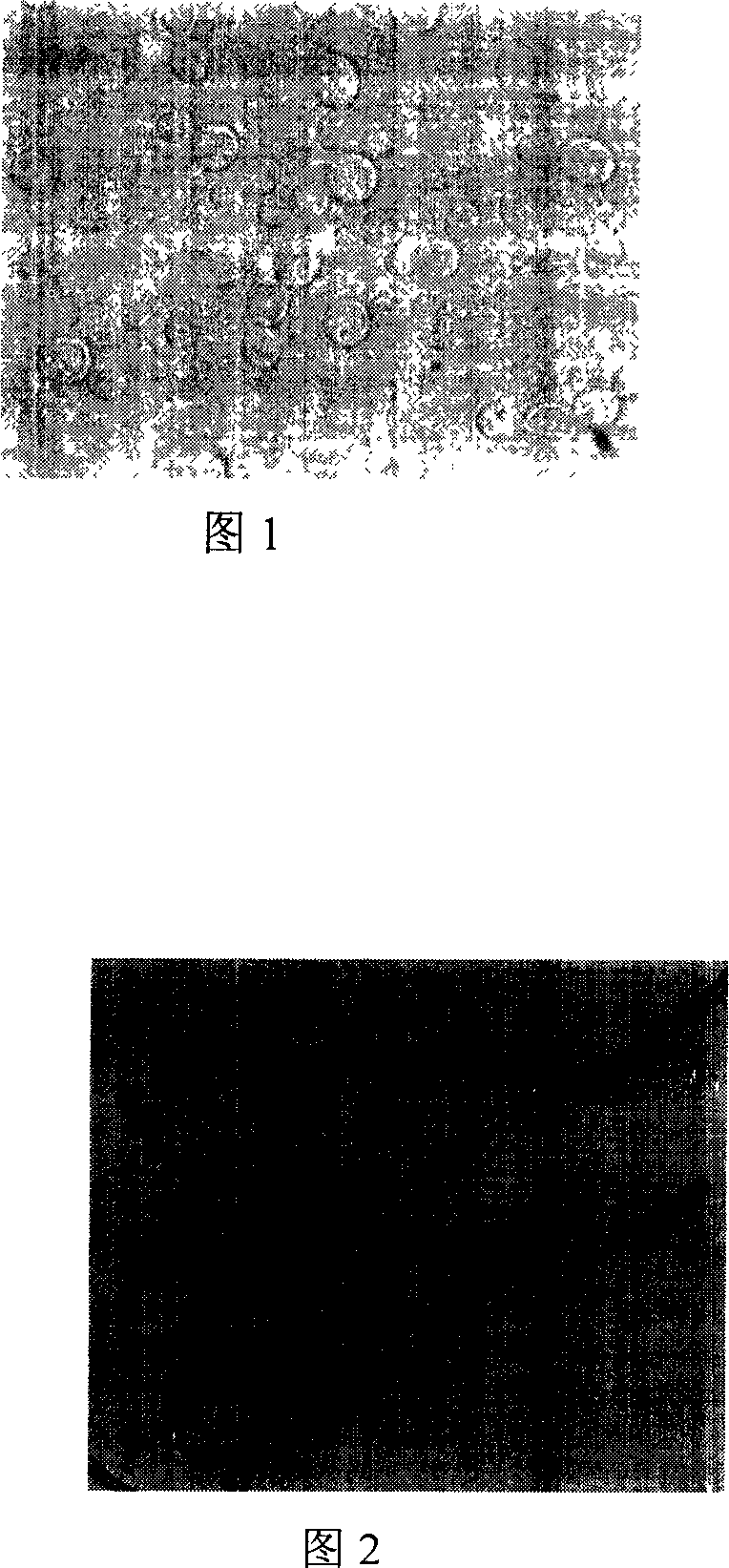Separation of tropical candiyeast strain and production of xylitol
A Candida and xylitol technology, applied in the biological field, can solve the problems of low product production rate, unsuitable for industrial production, and low production efficiency
- Summary
- Abstract
- Description
- Claims
- Application Information
AI Technical Summary
Problems solved by technology
Method used
Image
Examples
Embodiment 1
[0070] Seed medium composition: xylose 15g / L, glucose 15g / L, yeast extract 10g / L, KH 2 PO 4 , 1.5g / L, NH 4 h 2 PO 4 , 3g / L, MgSO 4 .7H 2 O, 0.1g / L, pH5-6, sterilized at 115C for 15 minutes. Xylose is sterilized separately from other ingredients, and the volume of a 250ml triangular bottle is 30ml. Take CCTCC: M205067 test tube slant culture to inoculate, and shake the flask at 30°C for 15 hours to activate the seeds. Take the activated seed culture solution, transfer it to a fresh seed medium at an inoculum size of 5% (v / v), continue to shake the flask for 15 hours, and obtain liquid seeds of about 60 g fresh cells / L.
Embodiment 2
[0072] Dry 40kg of bagasse, put it into a 500L enamel hydrolysis tank, add 300L of 2.5% sulfuric acid (w / v), directly feed steam, and heat to 120°C for 2.5h for hydrolysis. Release the hydrolyzate in the tank, and wash the residue once with water. Combine the solutions, neutralize the sulfuric acid with CaCO3, filter out the calcium sulfate precipitate, concentrate the solution under reduced pressure to a soluble solid content of 10%, pass through HPD500 macroporous adsorption resin column chromatography, and treat with activated carbon, and finally concentrate the solution to obtain usable It is a hydrolyzate syrup with a xylose content of about 300g / L for the production of xylitol by fermentation. The macroporous adsorption resin column chromatography detoxification method is introduced in the published article of the inventor (Acta Bioengineering, 2002, 18(6): 725-728).
Embodiment 3
[0074] 1000g of dried corncobs, crushed into particles with a diameter of about 1-5mm, add 10kg of water, boil for 30min, filter out the boiling liquid, and repeat the boiling once. Add 8L of 2.5% (w / v) sulfuric acid to the corncobs that have been filtered out of the boiled liquid, and hydrolyze at 120°C for 2.5h. The hydrolyzate was collected, and the residue was boiled once with water. Combine the two solutions, CaCO 3 Neutralize sulfuric acid, filter out calcium sulfate precipitate, concentrate the solution under reduced pressure to a soluble solid content of 10%, pass HPD500 macroporous adsorption resin column chromatography, and treat with activated carbon, and finally concentrate under reduced pressure until the xylose content reaches 300g / L . This hydrolyzate is directly used for fermentation to prepare xylitol.
PUM
| Property | Measurement | Unit |
|---|---|---|
| diameter | aaaaa | aaaaa |
Abstract
Description
Claims
Application Information
 Login to View More
Login to View More - R&D
- Intellectual Property
- Life Sciences
- Materials
- Tech Scout
- Unparalleled Data Quality
- Higher Quality Content
- 60% Fewer Hallucinations
Browse by: Latest US Patents, China's latest patents, Technical Efficacy Thesaurus, Application Domain, Technology Topic, Popular Technical Reports.
© 2025 PatSnap. All rights reserved.Legal|Privacy policy|Modern Slavery Act Transparency Statement|Sitemap|About US| Contact US: help@patsnap.com

